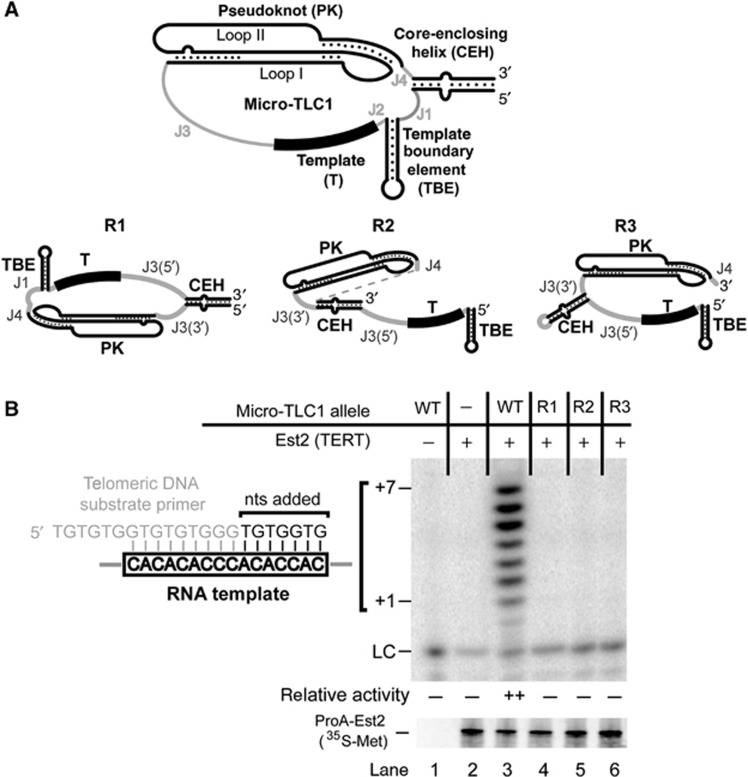Figure 1.
Rearranging the relative order of conserved structural elements abolishes telomerase activity in vitro. (A) Schematic of the four conserved core elements retained in a miniaturized TLC1 allele, Micro-T(170) (top). Single-stranded RNA regions between the functional elements have been designated as junctions (J) and numbered 5′ to 3′. See Figure 2A for nucleotide sequence. Three rearranged Micro-T(170) derivatives (R1–R3; bottom) were tested in a reconstituted telomerase activity assay. Sequences of mutants are found in Supplementary Figure S1. (B) Rearranged mutants failed to reconstitute telomerase activity (top). Products of an in vitro telomerase activity assay are indicated (+1 to +7). LC, loading (and recovery) control: ∼1 nM [γ32P]-labelled primer added prior to telomerase reactions. The amount of immunopurified (IP’d) ProA-Est2p was monitored by 35S-methionine incorporation (bottom). The telomerase RNA template annealing to the telomeric DNA substrate primer, used throughout this work, and the sequence of products generated by telomerase activity are shown to the left. Telomerase activity was quantified by dividing the sum of the signal in the +0 to +7 band by the LC. The average activity (normalized to the loading control) from at least two independent telomerase preparations is summarized as follows: (–), no telomerase activity was detectable above background; (++), wild-type activity level.

